Upon stepping into the church through the memorial façade, the visitor emerges into the luminous sanctuary, a composition of light-filled spatial volumes. Concave light coves sculpted into the exterior reflect the powerful sunlight into the interior space indirectly, achieving ethereal illumination. The double curved plaster vaults that shape the interior space are smooth, with no visible installations or other contemporary technical details that interrupt the light and flowing space.
The church is heated and cooled by an air conditioning system that supplies the conditioned air at low speed, through the floor registers located under the pews, causing as little noise as possible for a silent space.
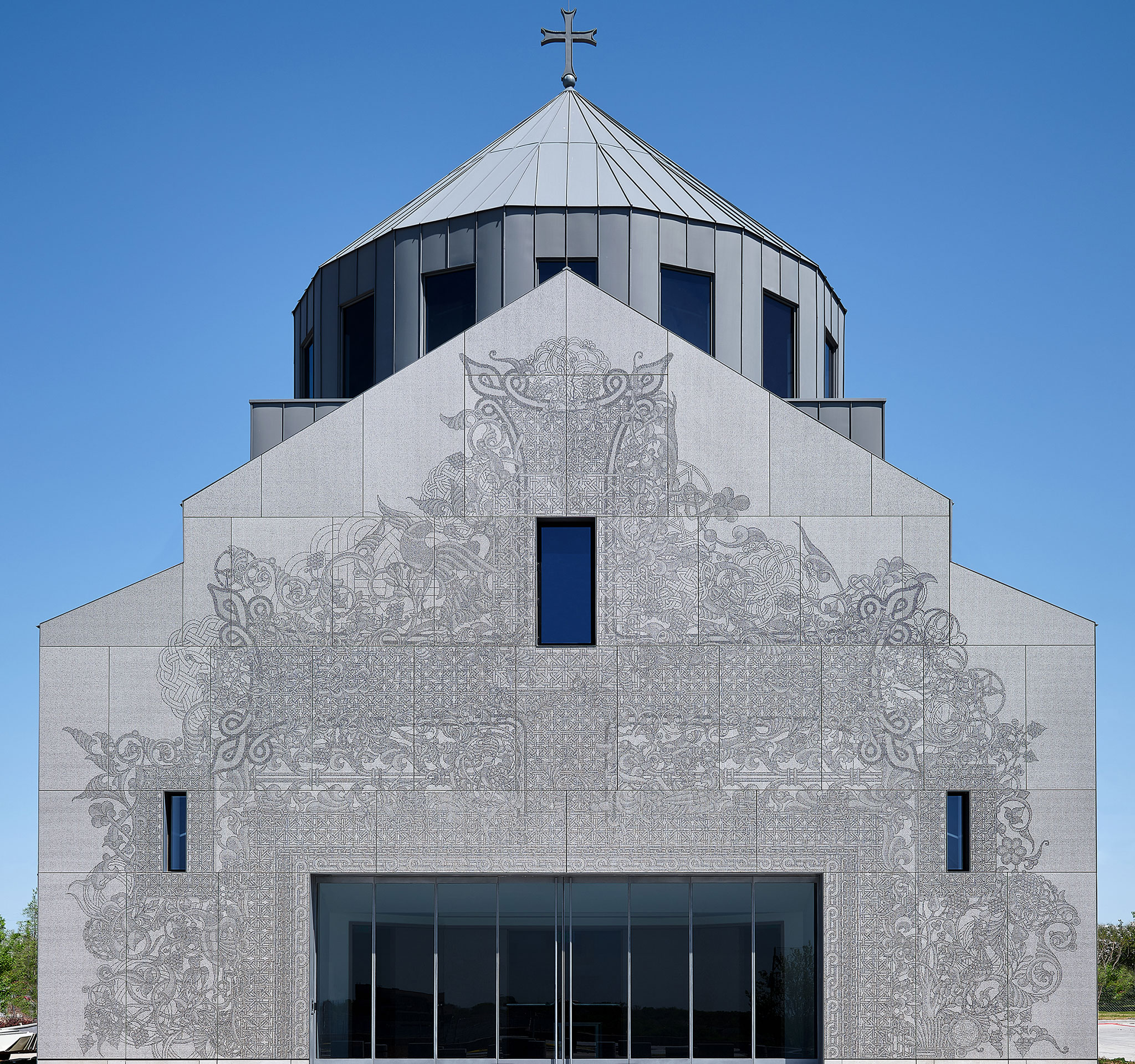
Saint Sarkis Armenain Church and Community Center by David Hotson_Architect. Photograph by Dror Baldinger.
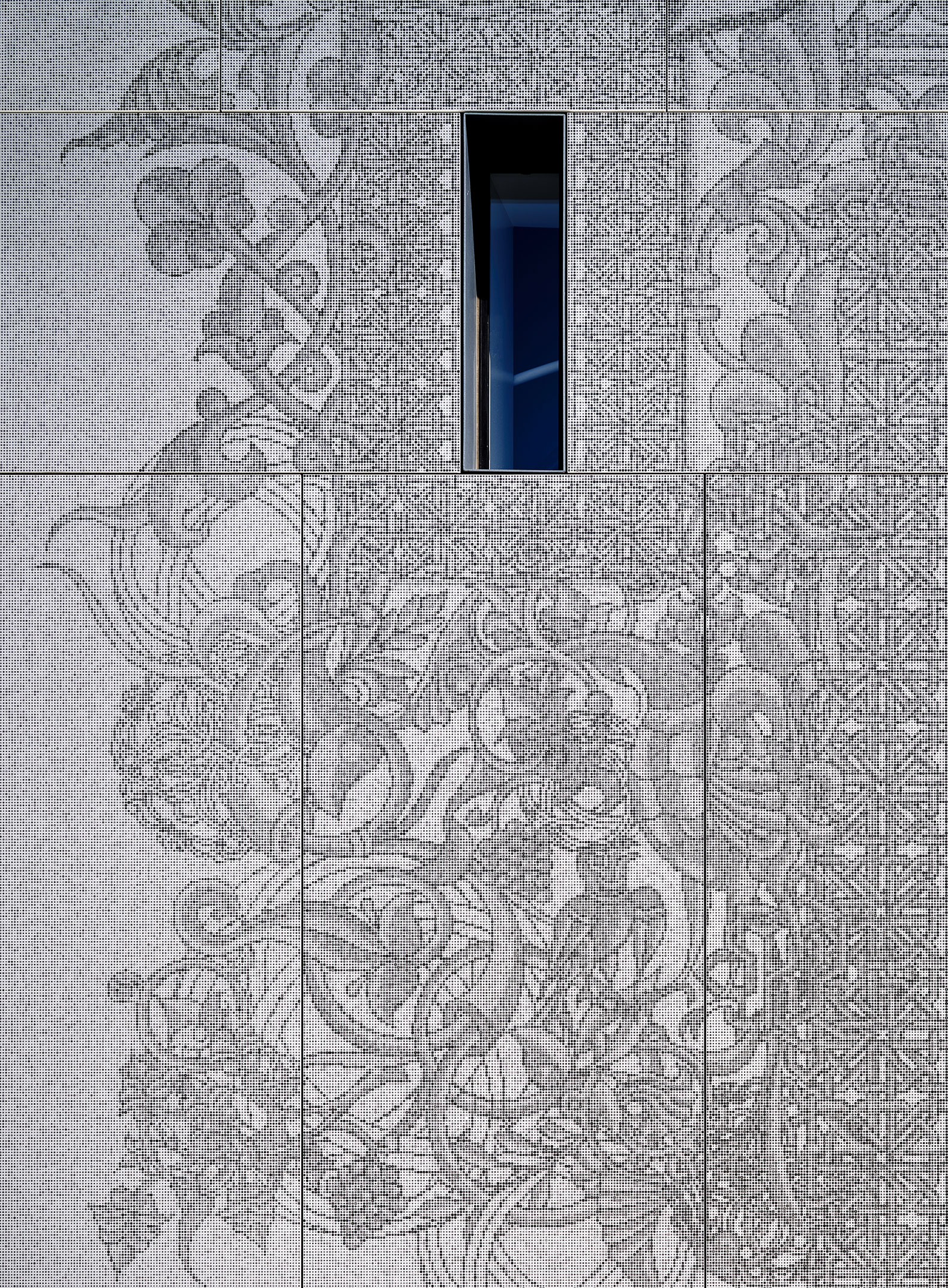
Saint Sarkis Armenain Church and Community Center by David Hotson_Architect. Photograph by Dror Baldinger.
Project description by David Hotson_Architect
The Church of Saint Sarkis in Carrollton, Texas is modeled on the ancient church of Saint Hripsime which still stands 8,000 miles to the east near the ancient seat of the Armenian Apostolic Church in Etchmiadzin, within the modern-day Republic of Armenia. The Church of Saint Hripsime was completed in 618 AD, and the cornerstone of Saint Sarkis was laid exactly fourteen centuries later in 2018.
The Armenian homeland, situated in the South Caucasus, originally encircled Mount Ararat, the tallest mountain in the Middle East where Noah’s ark is said to have come to rest at the end of the Biblical flood. In 301AD the Kingdom of Armenia became the first nation on earth to convert to Christianity, adopting the Christian faith sixty years before the Emperor Constantine established it as the official religion of the Roman Empire. The Church of Saint Hripsime has stood in this seismically active region sheltering Armenian congregations through fourteen centuries as the surrounding Persian, Greek, Roman, Byzantine, Ottoman, Russian and Soviet Empires rose and fell. It serves as s symbol of the continuity and perseverance of the language, faith and traditions of the Armenian people.

Saint Sarkis Armenain Church and Community Center by David Hotson_Architect. Photograph by Dror Baldinger.
The Saint Sarkis church, carrying the memory of this ancient tradition, faces west, overlooking the vast Texas horizon, remembering the distant Armenian homeland from which the ancestors of many members of the congregation were violently expelled during the Armenian genocide of 1915. Millions were driven into the Syrian desert, where they perished of thirst, starvation, exhaustion and exposure. A few survived the desert crossing and reached Lebanon, where an Armenian diaspora community was established. The primary patron of the new Saint Sarkis Church was born in Beirut and emigrated to America during the Lebanese Civil War. An Armenian diaspora community formed north of Dallas and eventually established the first home for the Saint Sarkis congregation in a converted house purchased in 1990. The Saint Sarkis Church campus is the new home for this original congregation.
Upon stepping through the western façade, which serves as a memorial to the 1.5 million victims of the Genocide, the visitor emerges into the sanctuary, a volumetric composition modeled on the interior of Saint Hripsime. Concave light coves sculpted into the exterior reflect the powerful Texas sunlight indirectly into the interior. The surfaces of the concave spatial volumes, fabricated in glass-fiber-reinforced gypsum, are smooth and scaleless, with no visible lighting fixtures, air-conditioning registers or other contemporary technical details to interrupt the luminous spatial figure. The result is a figure of architectural space filled with an ethereal quality of light, in which Illumination reaches the congregation through the weightless memory of the ancient church of Saint Hripsime suspended over the sanctuary.
The church is heated and cooled with a displacement climate control system, which uses a remotely located mechanical plant to introduce conditioned air at low velocity through floor registers located under the pews. The result is a silent interior, free of the mechanical vibration or ambient noise of a conventional high velocity air conditioning system, offering a silent backdrop for the reverberant acoustics of traditional Armenian choral music.
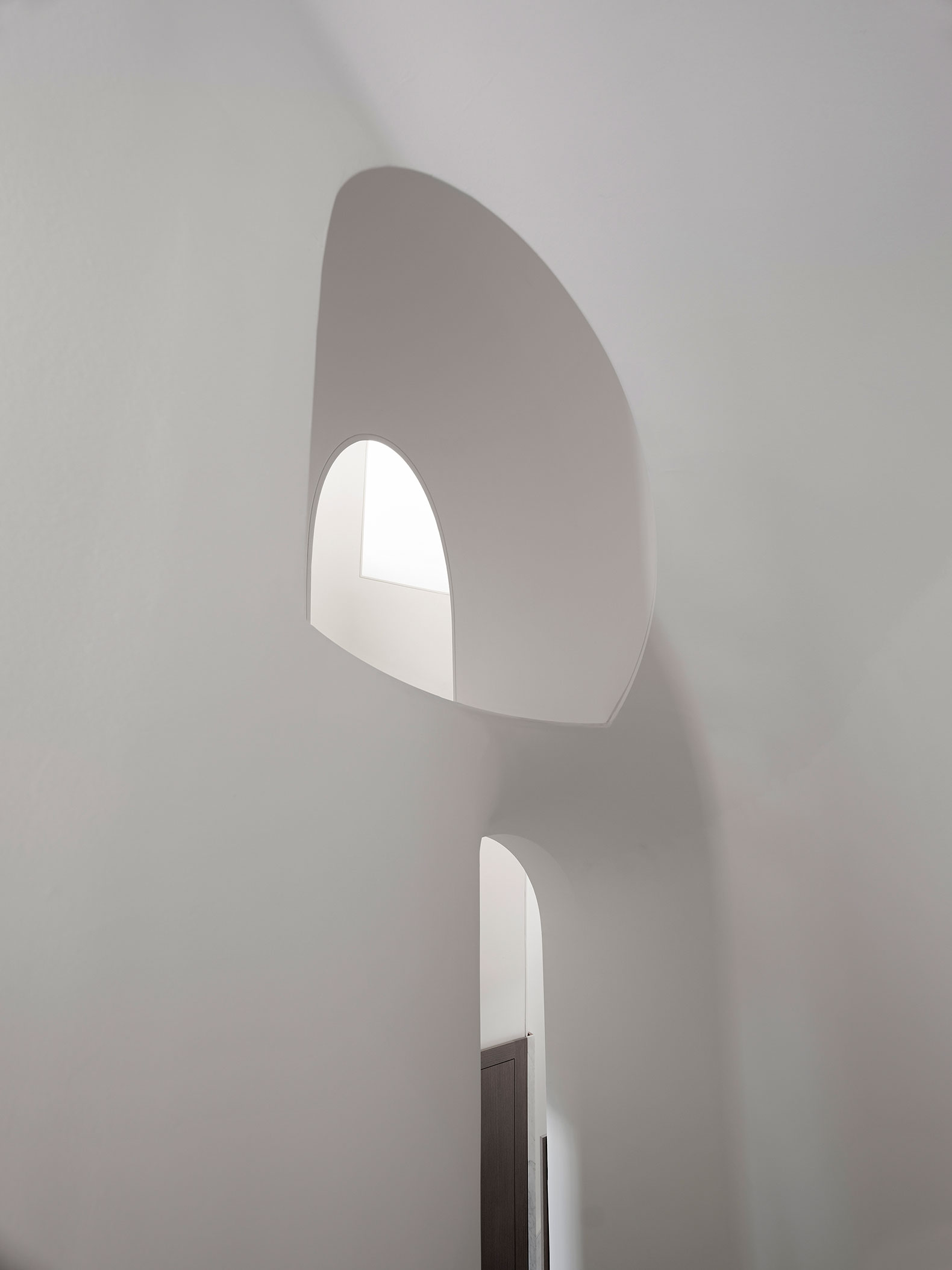
Saint Sarkis Armenain Church and Community Center by David Hotson_Architect. Photograph by Dror Baldinger.
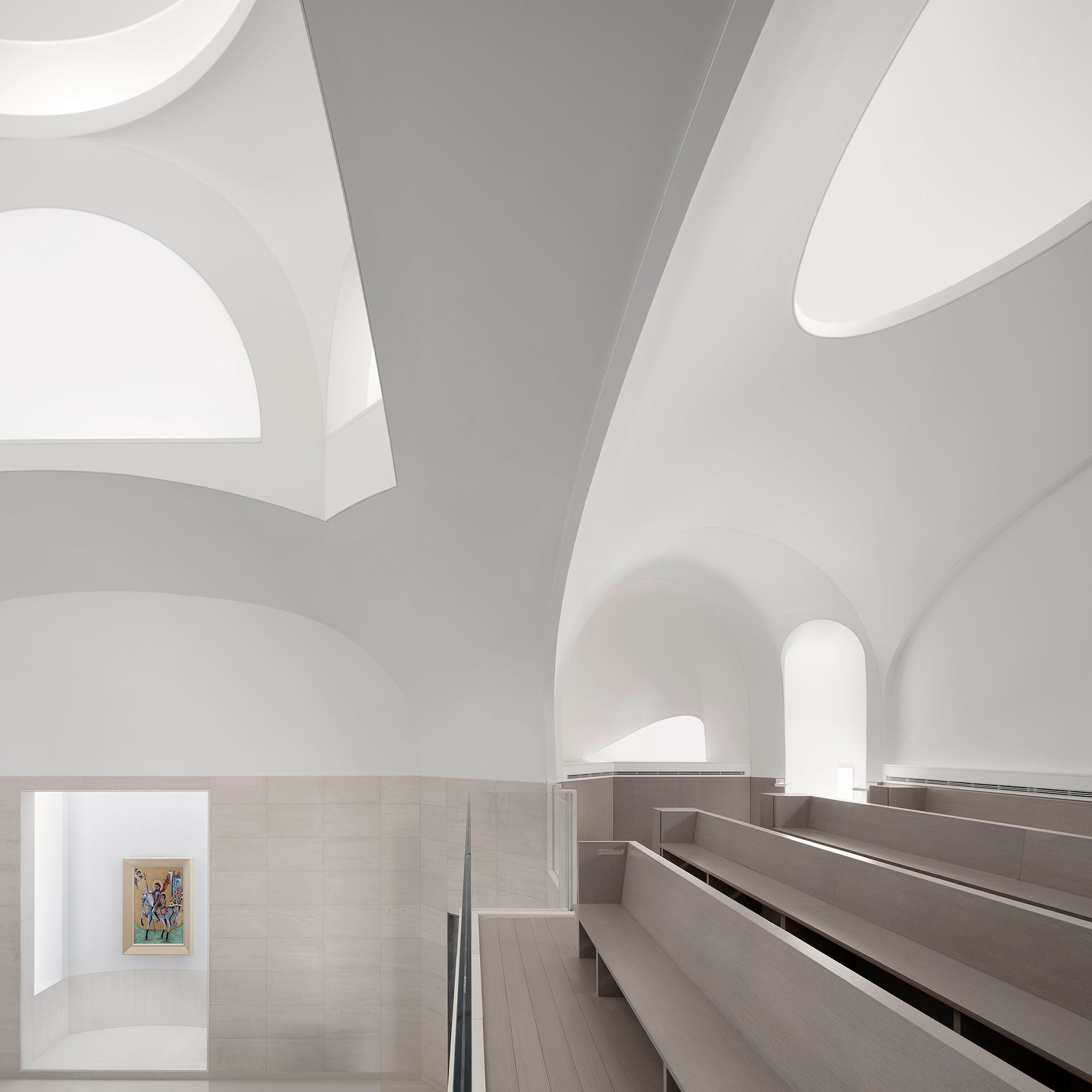
Saint Sarkis Armenain Church and Community Center by David Hotson_Architect. Photograph by Dror Baldinger.
The façade of the saint sarkis armenian church
The western facade at the entrance to the Church of Saint Sarkis serves as a memorial to the victims of the 1915 Armenian Genocide.
From a distance the facade depicts the traditional Armenian cross with the distinctive branching arms.
As a visitor approaches the façade, the cross dissolves into patterns of interwoven botanical and geometrical strands drawn from medieval Armenian art, evoking the threads of ancestry, language, culture and tradition that have bound the Armenian people together through centuries of upheaval.
Upon approaching still closer, these interwoven ornamental patterns dissolve further, into a grid tiny circular ornaments, each one centimeter in diameter. The ornaments are derived from the endlessly varied circular emblems, symbolizing infinity, that recur throughout the Armenian artistic tradition. There are 1.5 million ornaments in total spreading across the entire facade, and every one is unique, each representing one of the 1.5million individuals who perished in the 1915 Armenian Genocide.

Saint Sarkis Armenain Church and Community Center by David Hotson_Architect. Photograph by Dror Baldinger.
The scale of the individual icons spreading across the entire façade provides an encounter with the scale of this historical loss.
The graphic design was developed in the office and a the computer script was written to generate 1.5 million unique ornaments and distribute them by density to form the overall design. The facade was manufactured by Fiandre, the Italian manufacturer of porcelain finishes who developed a groundbreaking process of high-resolution uv-resistant printing on exterior-grade porcelain rain-screen panels and worked through the global pandemic to fabricate and print this memorial to the ancestors of congregation of the Saint Sarkis Church.
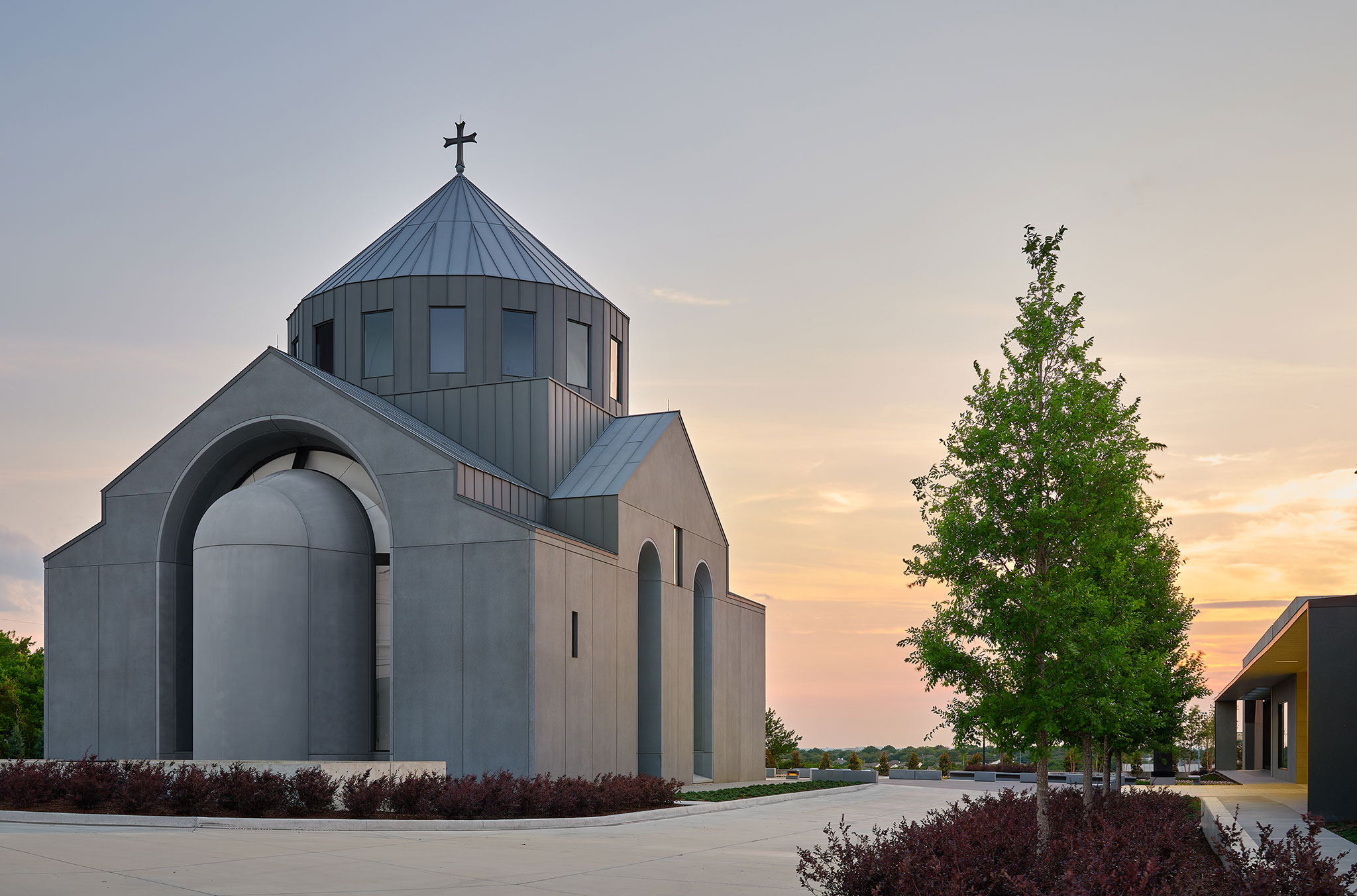
Saint Sarkis Armenain Church and Community Center by David Hotson_Architect. Photograph by Dror Baldinger.
The church of Saint Sarkis was consecrated on April 23rd, 2022, and the first service was celebrated the following day, on Sunday April 24th, the date every year dedicated to the memory of the victims of the Armenian Genocide.
In November 2022, the Saint Sarkis memorial facade was honored with a Best of Year Award by the editors of Interior Design Magazine.


















































